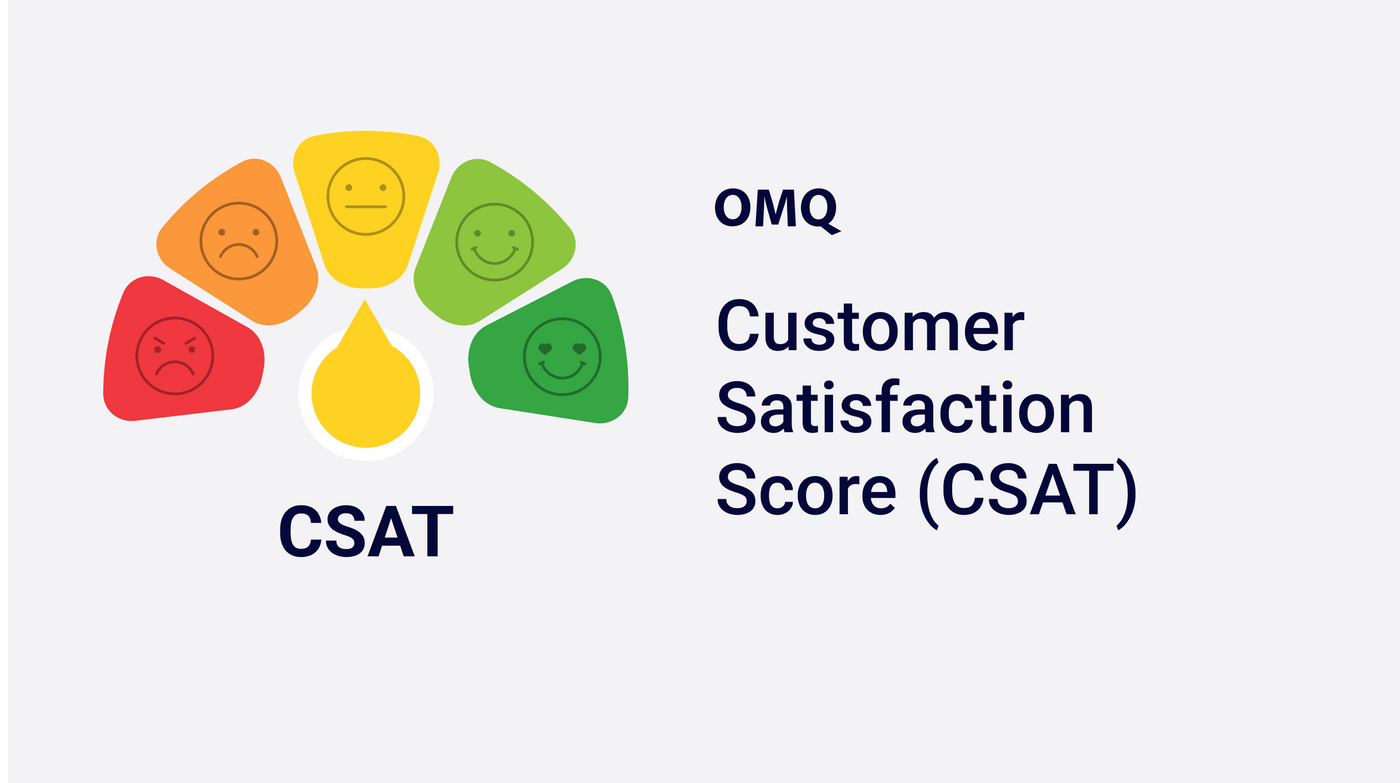Customer Service
Customer Centricity Explained
Learn how customer centricity can help your business increase customer satisfaction and strengthen loyalty. Discover 10 effective strategies to improve customer centricity.
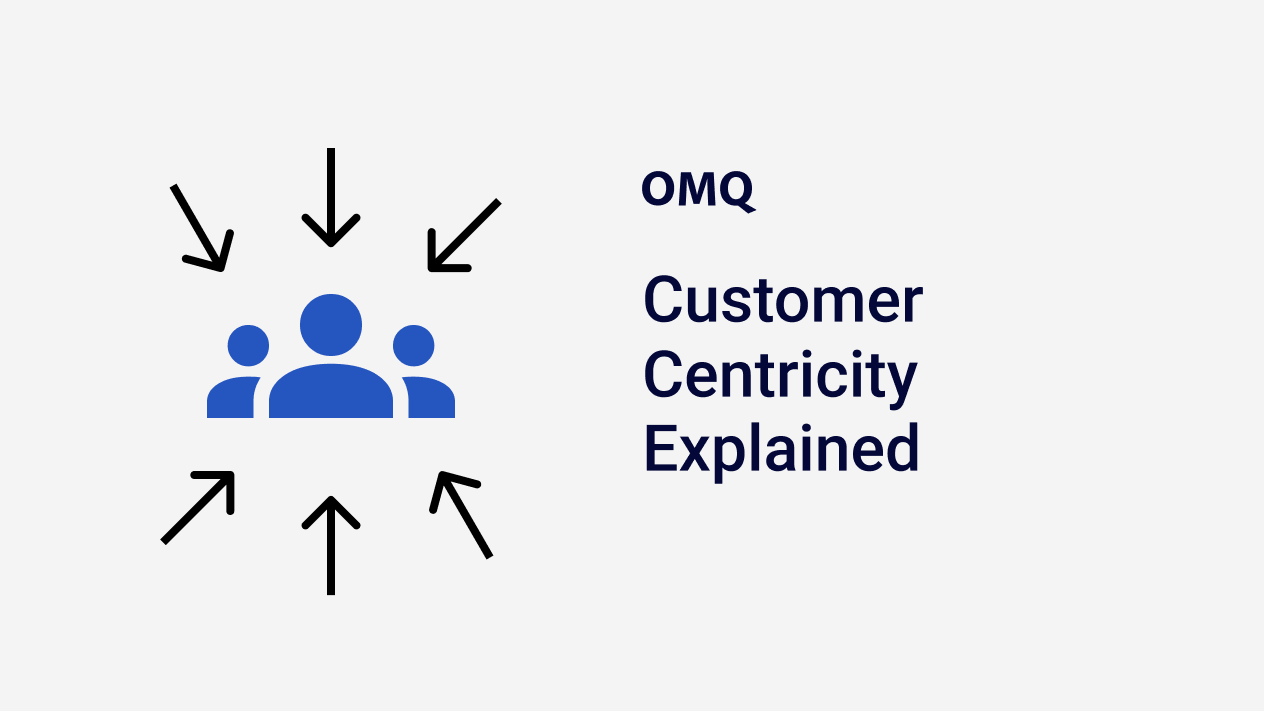
In today’s competitive business world, customer centricity is more than just a buzzword. It is a crucial strategy that can make the difference between success and failure. Companies that focus on the needs of their customers are better able to meet their expectations and build long-term relationships. In this article, we will explore what customer centricity means and how it can be effectively implemented.
- What Does Customer Centricity Mean?
- The Role of Customer Centricity in Business Success
- Benefits of Customer Centricity
- What is a Customer-Centric Corporate Culture?
- Strategies to Improve Customer Centricity
- Challenges in Implementing Customer Centricity
- How Can Technology Improve Customer Centricity?
- Success Factors for Strong Customer Centricity
- The Future of Customer Centricity
- Conclusion
What Does Customer Centricity Mean?
Customer centricity refers to aligning all company activities with the needs and expectations of customers. It involves placing the customer at the center of all decisions and ensuring that all products and services aim to meet their requirements. This includes not only selling products or services but also how a company interacts with its customers.
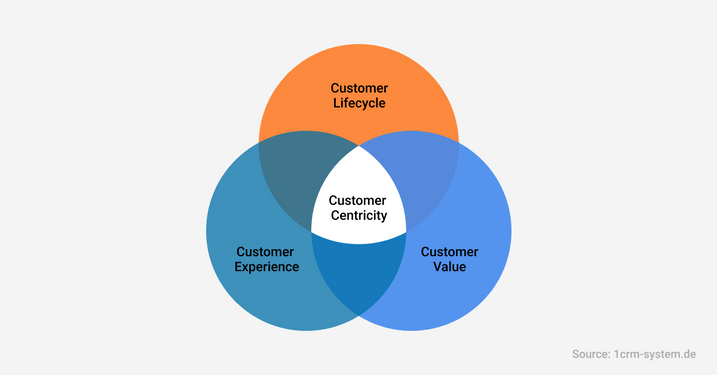
The centre of any activity in a company should be the customer.
The Role of Customer Centricity in Business Success
Companies that are customer-centric often have a competitive advantage. By understanding their customers’ needs, they can offer products and services that provide real value. This not only leads to higher customer satisfaction but also stronger loyalty and a better reputation in the market.
Benefits of Customer Centricity
- Increased Customer Satisfaction: Aligning offerings with customer needs boosts satisfaction.
- Stronger Customer Loyalty: Satisfied customers are more loyal and likely to return.
- Competitive Advantage: A customer-centric approach helps differentiate from competitors.
- Improved Word-of-Mouth: Satisfied customers tend to share positive experiences with others.
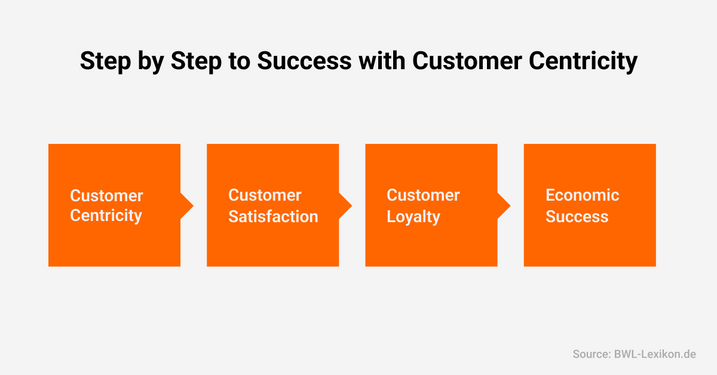
Economic success results from a successful customer-centric corporate culture.
What is a Customer-Centric Corporate Culture?
A customer-centric corporate culture is a business philosophy where all aspects of a company focus on understanding and meeting customer needs and expectations. This culture places the customer at the heart of all decisions and activities. Key characteristics include:
- Customer-Centric Values: Emphasizing the customer’s importance in the company’s success.
- Empathy and Understanding: Training employees to empathize with customers for better solutions.
- Continuous Feedback: Encouraging regular feedback from customers to better understand their needs.
- Proactive Problem Solving: Identifying and resolving potential issues before they escalate.
- Personalization: Designing products/services tailored to individual customer needs.
- Open Communication: Maintaining transparent communication to build trust.
- Employee Engagement: Empowering employees at all levels to act in customers’ best interests.
- Long-Term Relationships: Focusing on building long-term relationships rather than short-term gains.
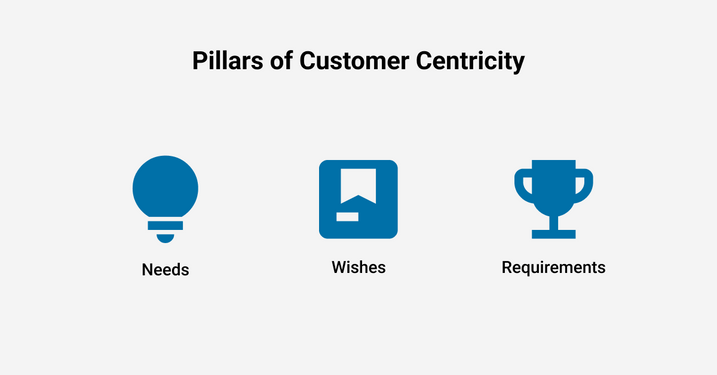
A customer-oriented corporate culture focuses on the pillars of customer orientation.
Strategies to Improve Customer Centricity
- Promote a customer-centric corporate culture among employees.
- Regularly gather feedback through surveys or direct conversations with customers.
- Create personalized experiences by tailoring offerings to individual preferences.
- Maintain effective communication by keeping customers informed about relevant developments.
- Ensure quick response times by addressing inquiries promptly.
- Conduct employee training on customer-friendly practices regularly.
- Utilize technology, such as CRM systems, for better management of customer data.
- Demonstrate transparency about processes and products.
- Offer proactive problem-solving by addressing potential issues before they escalate.
- Build long-term relationships by investing in measures that enhance customer loyalty.
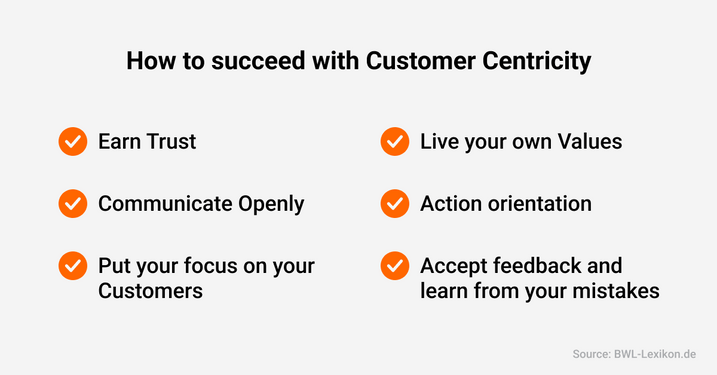
Acting in a customer-oriented manner is not difficult.
Challenges in Implementing Customer Centricity
Despite clear benefits, there are challenges:
- Continuously adapting to changing customer expectations
- Ensuring consistent experiences across all channels
- Balancing automation with personal contact
How Can Technology Improve Customer Centricity?
Technology significantly enhances customer centricity by enabling companies to respond more efficiently to customer needs and provide personalized experiences:
- Personalized Experiences: Data analysis tools offer insights into customer behavior/preferences, allowing for tailored offerings.
- 24/7 Support: Technologies like chatbots provide continuous support, increasing satisfaction by reducing wait times.
- Efficient Communication: CRM systems centralize interactions, ensuring consistent communication across channels.
- Automation of Routine Tasks: RPA handles repetitive tasks efficiently, freeing employees for complex queries.
- Improved Feedback Systems: Online surveys facilitate continuous feedback collection for ongoing improvement.
Overall, technology not only streamlines handling inquiries but also fosters deeper connections through personalized interactions, leading to higher satisfaction and loyalty.
Success Factors for Strong Customer Centricity
Key factors for successful implementation include:
- Strong management commitment
- A clear vision for customer-centered goals
- Regular training for all employees
The Future of Customer Centricity
With technological advancements, interaction methods will evolve further, increasing personalized experiences while technologies like AI play larger roles.
Conclusion
Customer centricity is more than just a strategy—it’s an essential component of business success in the 21st century. By understanding and fulfilling your customers’ needs, you can boost satisfaction, build long-term relationships, and position your company successfully in the market.

